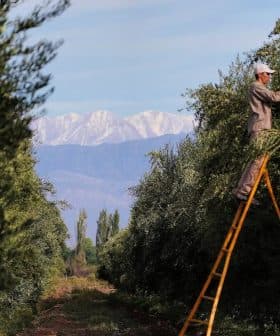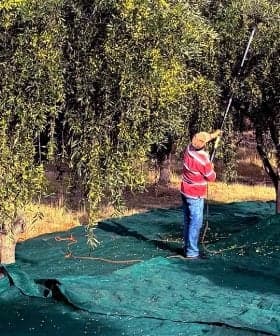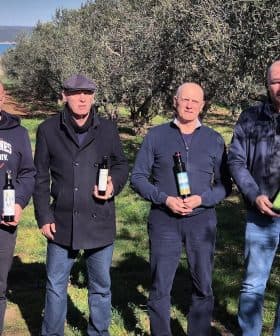After Years of Drought and Covid, Australians Celebrate Record-Breaking Harvest
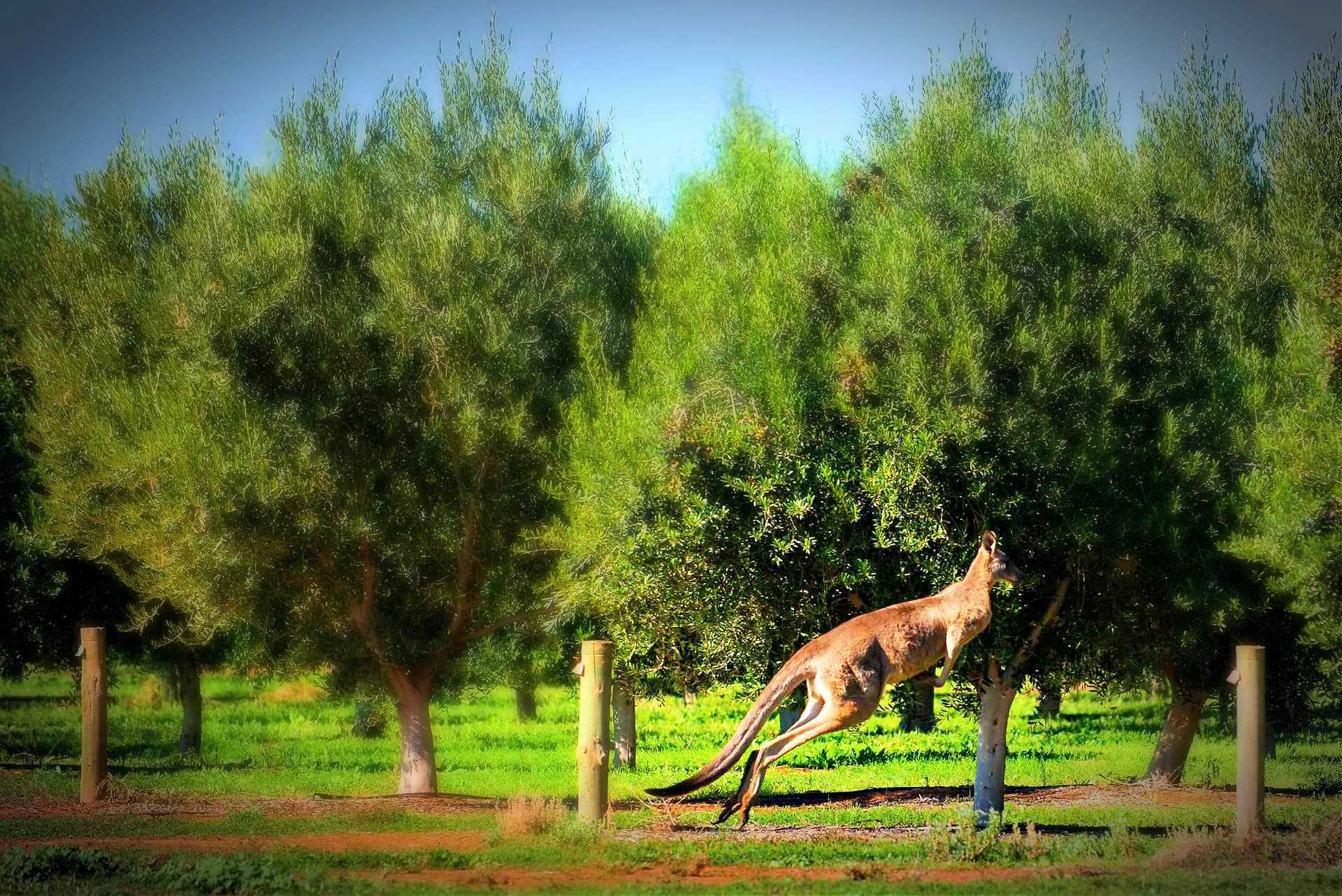
Australian producers had a successful 2021 olive harvest despite facing challenges such as Covid-19 restrictions, heavy rains, frost damage, and labor shortages at the start of the season. The estimated yield of olive oil for 2021 is 20,000 to 21,000 tons, with the industry flourishing in Australia and growers achieving record harvests.
Australian producers are celebrating a successful end to the 2021 olive harvest.
Farmers worked around Covid-19 restrictions, heavy rains, frost damage and labor shortages at the start of the season to ultimately achieve a bumper harvest.
In many ways, 2021 has been our best harvest ever. The company’s own groves broke their previous productive record by more than two million liters of oil.
“The Australian olive industry is celebrating a record crop this year,” said Michael Southan, the CEO of the Australian Olive Association (AOA). “After low production last year, growers are having a record harvest as olive growing areas emerge from drought and experience more favorable seasons.”
See Also:Despite Covid and Drought, Australian and New Zealand Producers Shine at NYIOOC“The estimated yield of olive oil for 2021 is 20,000 to 21,000 tons, which is 23 to 24 million liters of olive oil,” Southan told Olive Oil Times. “The industry has flourished in Australia with the entry of some very smart operators who have taken olive production to new levels.”
According to International Olive Council data, Australia previously produced about 21,000 tons during the 2017 and 2018 olive harvests.
Southan said that to ensure there is enough local extra virgin olive oil available throughout the year, the industry is focused on targeted grove management practices to circumvent variations in production due to the natural alternate bearing cycle of the olive tree and mitigate the effects of drought.
“The good news is that the record 2021 harvest means consumers will be spoiled for choice when it comes to selecting extra virgin olive oil and they won’t have to look past our fresh, high-quality Australian products,” he said.
Southan added that the recent labor shortages that cropped up during the early harvest did not end up posing a significant challenge for growers.
“The vast majority of olives in Australia are harvested mechanically,” he said. “For small producers that use labor, they were generally able to track down labor locally, so this was not a significant issue.”
The Australian Olive Oil Association (AOOA) estimated the yield of the 2021 harvest to be a “record-breaking” 20 to 22 million liters of olive oil. The slight discrepancy between the AOA and AOOA estimates is due to no official tracking measurement methods being in place.
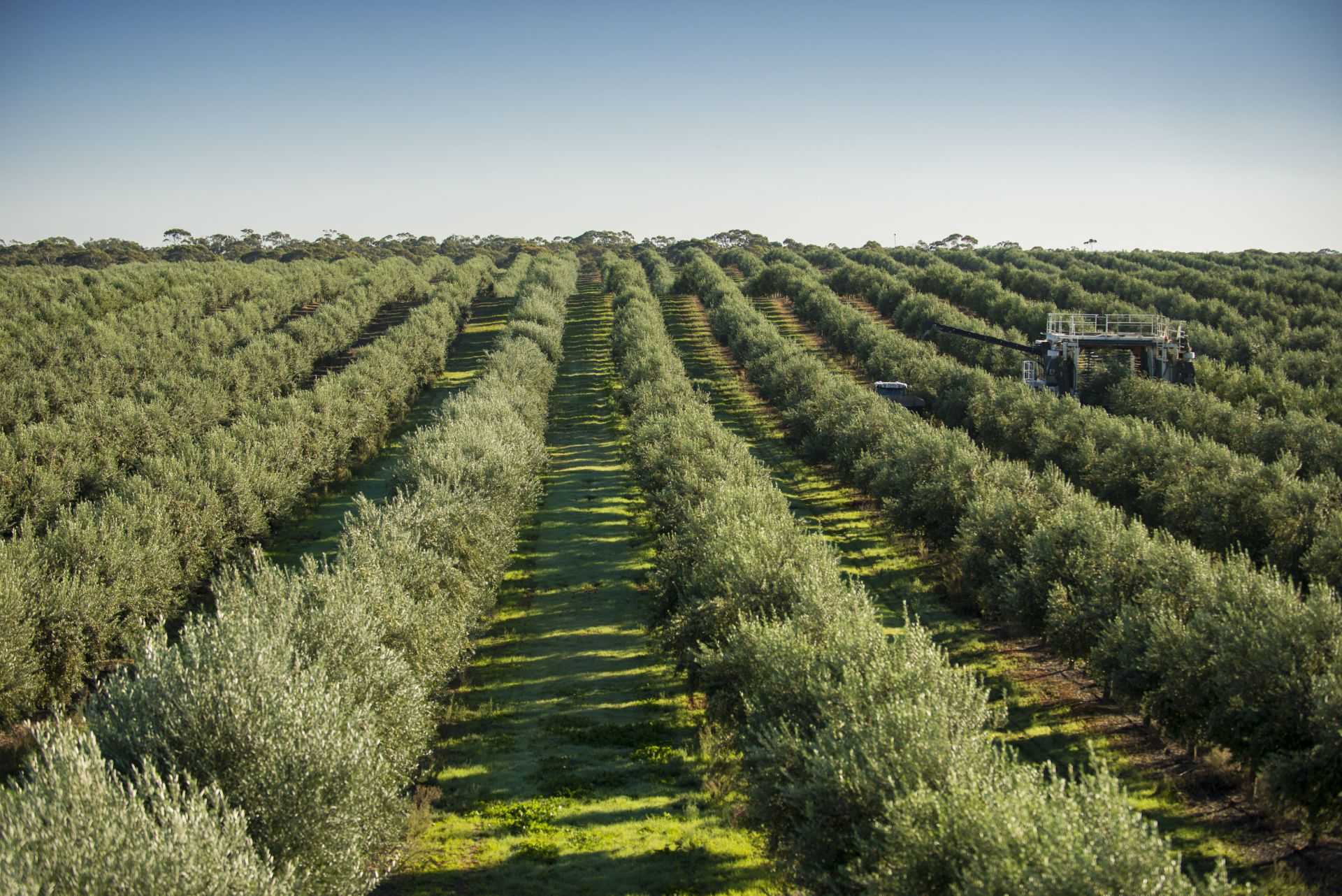
Boundary Bend
“Good winter rains last year broke the drought and contributed significantly to the harvest, deepening the expectations of being an on-year for most states – except for some growing regions such as in Western Australia – within the normal biennial cycle of olive trees,” said David Valmorbida, the president of the Australian Olive Oil Association (AOOA).
“This values the Australian crop in the range of AUD 120 million to AUD 140 million (€75 million to €87 million), which is the wholesale value for the bulk farm gate product, with growers receiving attractive returns that support the business case for continued expansion of the local industry,” he added.
Valmorbida said the record harvest was “an excellent outcome for the local industry in the face of trying conditions during the last 12 months.”
He said some growers were faced with frost damage, while others were confronted with dry fruit and low yields at the start of the harvest. Others encountered swollen fruit due to heavy rainfall.
Amanda Bailey, an AOOA committee member, agreed that after the bushfires and “complexities of 2020” this year’s harvest season came with a new set of challenges.
“As well as weather extremes, the industry was also impacted by shipping delays in the Suez Canal, which held up processing machinery, equipment and storage tanks,” Bailey said. “Plus, lockdown and travel restrictions because of Covid-19 led to a labor shortage at harvest time, meaning there were tons of fruit left to spoil on trees.”
Karen Godfrey, the marketing manager for Taralinga Estate on Australia’s Mornington Peninsula, south of Melbourne, told Olive Oil Times their “2021 harvest results are back to where we were pre-Covid-19, which is great.”
Godfrey said Taralinga was not affected by the recent labor shortages that cropped up as growers started harvesting.
“Taralinga Estate typically employs local resources, so fortunately we are not being impacted by the current shortage of international labor like many agriculture producers are,” she said.
However, the ongoing Covid-19 restrictions were a hindrance.
“Once again we had to enforce social distancing and have minimal staff on-site due to Covid-19, but the biggest impact was the inability to have our Pieralisi technician on-site because of international travel restrictions,” Godfrey said.
“On the upside, it forced us to become self-sufficient with servicing our equipment and trouble-shooting any issues that may ever arise,” she added.
In addition to Covid-19 restrictions, the team at Taralinga dealt with weather challenges as the harvest was drawing to a close.
“We had a lot of rain the last week of harvest, which made the conditions quite difficult as the ground was very soft,” Godfrey said.
“We’re incredibly proud of and grateful for our grove team who, once again, put in an extraordinary effort for harvest working long days under tough conditions,” she concluded. “Without them, we wouldn’t have our international gold-winning extra virgin olive oil.”
Another producer from the Mornington Peninsula, Sui Tham, who co-owns Cape Schanck Olive Estate with her husband, Stephen, told Olive Oil Times their harvest was “very successful as we were able to harvest each variety at the optimum fruit condition.”
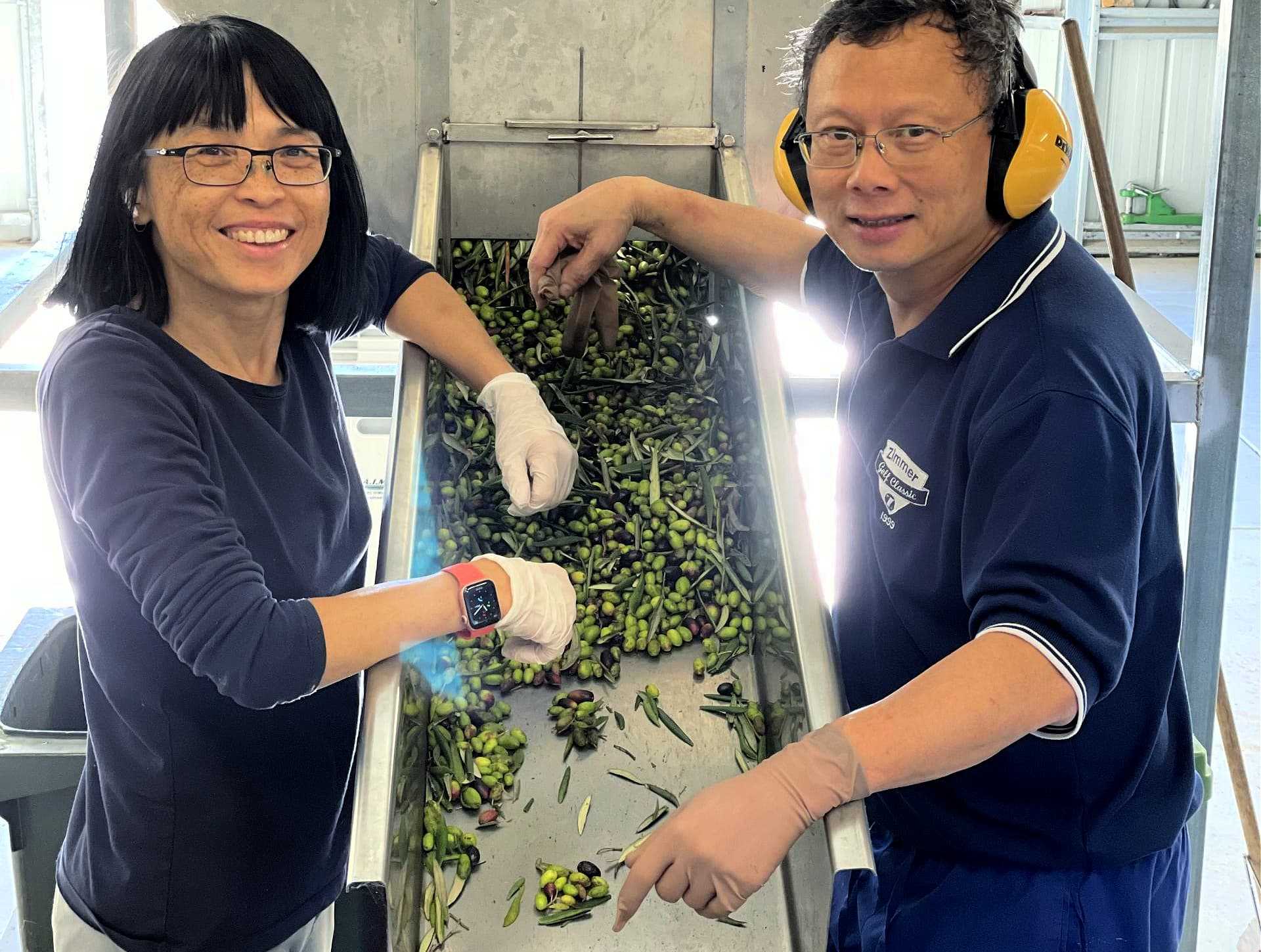
Photo: Sui Tham
“We started our harvest two weeks later than usual, probably due to the cooler summer, and other than foxes chewing the irrigation pipes and kangaroos lurking outside the olive grove, we had a pretty uneventful year,” she added.
“The weather was wet leading up to harvest, but during harvest, we were mostly greeted with sunny, calm days,” Tham continued. “Quality-wise, we are quietly confident that it will live up to last year’s vintage. So far, all the laboratory tests are pointing in the right direction. There was a slight drop in the quantity that may reflect the heavy pruning that was undertaken after last year’s harvest.”
She said that Cape Schanck Olive Estate was fortunate that they had locals helping them during harvest and they were not impacted by the labor shortages.
She said they followed Covid-19 safety precautions and their harvest went “unimpeded, but without the long line of visitors and helpers, and without the usual celebration after the harvest.”
Elsewhere in Victoria, Boundary Bend, Australia’s largest olive oil producer, also celebrated a record harvest.
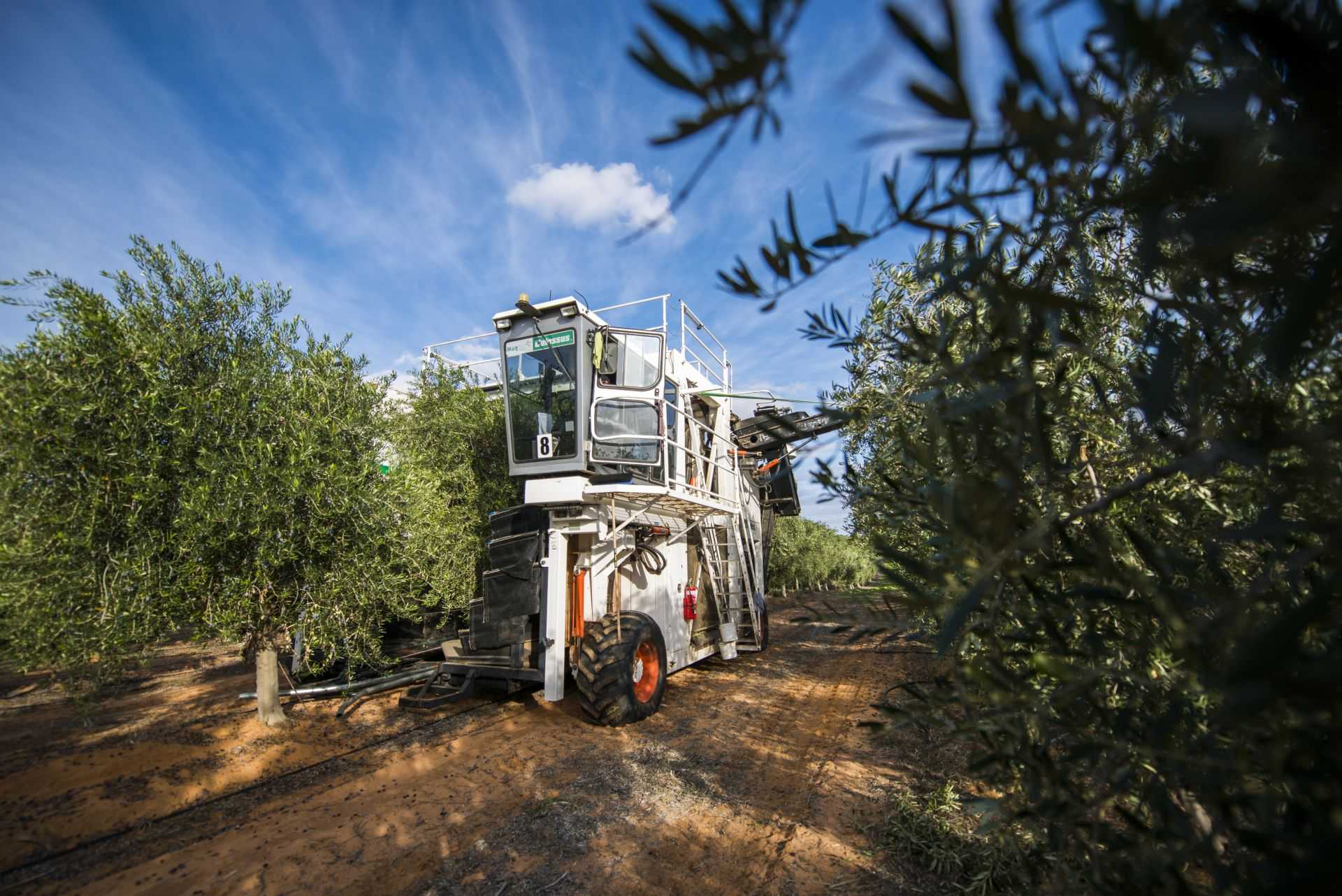
Boundary Bend
“In many ways, 2021 has been our best harvest ever,” Leandro Ravetti, the company’s co-CEO and chief oil maker, told Olive Oil Times. “The company’s own groves broke their previous productive record by more than two million liters of oil, with the more mature of those groves at Boundary Bend being arguably the most productive single olive grove in the world, after producing more than 11.5 million liters of olive oil in a single season.”
“After a difficult year in 2020 across many fronts, the stars aligned for us in 2021,” he added. “Weather conditions were very good right from the beginning with a wet and cool 2020 winter, moderate and stable temperatures in summer and gentle and mostly dry autumn conditions during harvest.”
“We had great flowering and fruit set, leading to a heavy but balanced crop that ended up producing not only record-breaking yields but fantastic quality oils too,” Ravetti continued.
He said that even though labor shortages were a challenge, Boundary Bend has “a very strong base of gray nomads” – older Australians who travel for extended periods across the country and at times work part-time to fund their travels – that return every year and “are now part of our family.”
Ravetti added that Boundary Bend had also had a reasonable number of backpackers that remained in the country and returned to work with them this year.
He said the team learned a lot from harvesting with Covid-19 restrictions last year “where the situation was a lot more complicated due to the lack of information and knowledge.”
“Fortunately, we didn’t have to go to the extremes that we went to last year, such as providing isolated accommodation or all meals,” he said. “But we maintained most of our other protocols, such as quarantine and testing of staff prior to the start of harvest, daily temperature checking, social distancing, full disinfection and sanitation between shifts.”
As a result of all these measures, Boundary Bend completed the harvest “safely and without any cases.”



